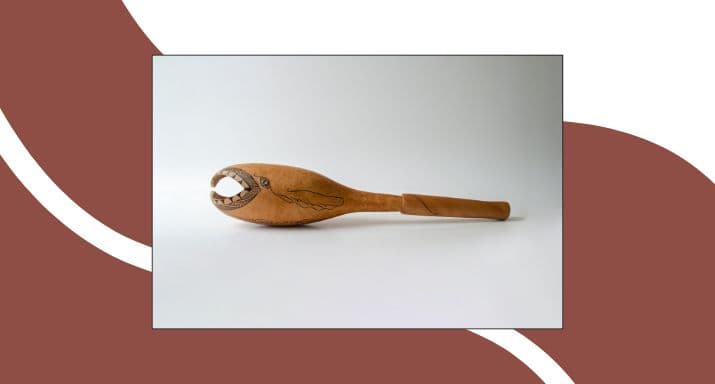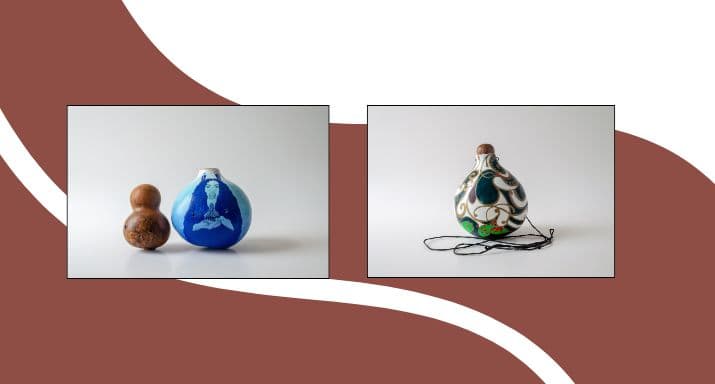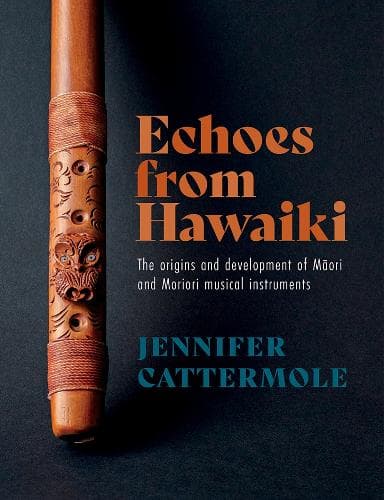'Echoes from Hawaiki' author Jennifer Cattermole on taonga pūoro
Hi, Jennifer! Excited to have you here to talk about Echoes from Hawaiki. You speak of Māori and Moriori taonga pūoro with such reverence and respect. Every one is a taonga with a history and I imagine a privilege to write about?
Absolutely! I’m very mindful that every breath shared with these incredible taonga, every strike, every swing of a string, is an act of musical co-creation. Every taonga/miheke is utterly unique, each has their own wairua and a very definite will of their own, and each has their own whakapapa – a whakapapa that ultimately reaches back to the unlimited potential of Te Kore and the genesis of all creation. I love that I can feel the energy vibrations as I hold one in my hand. I also enjoy the journey of learning their personal names – a process that can take a little time sometimes. Writing about them’s a privilege in more than one sense. I’ve not only had a chance to write about instruments I’m absolutely passionate about and care deeply for, but have been really privileged and grateful to have had the time and resources that have enabled me to do this mahi.
How long has your book been in the making? How did it evolve from your research?
That’s a little like asking how long a piece of string is! Most of the mahi took place from 2016-2024, so a period of almost 10 years, but my journey along te ara pūoro goes back further than that. I started seriously learning about taonga pūoro back in 2012. I was captivated by these instruments the first time I saw them and heard their voices. That happened back in 1998, when I attended a university music class given by Richard Nunns. When I was lucky enough to get a job at Otago University, one of the first things I asked my then Head of Department was if we could purchase some taonga pūoro for use in teaching and community outreach. Fortunately he said yes, and my learning journey has continued from that time onward. It’s a never-ending process, that journey of discovery.

I read that you are also a taonga pūoro performer and musician. It must be satisfying to be able to write and research as well as play? Having your passions collide, so to speak?
It sure is. I often have to pinch myself when I think about how lucky I am to have the job I do. It’s such a blessing to make a living from mahi I’m passionate about. I’ve found there are some things that you can only really experience, learn and communicate through music, through actually performing with instruments. Trying to put some of that knowledge into words has certainly been a challenge. Both the writing and the performing have both been amazingly satisfying creative endeavours, both in quite different ways at times.
What led you to the study of the origins of taonga pūoro?
It was initially a fascination with Moriori music and culture that got me onto that particular topic. The Hokotehi Moriori Trust and I put a grant application together focussing on learning more about Moriori music, and the feedback I got was that there likely wasn’t enough information left, unfortunately, for that project to be viable. I sought advice on how I might still be able to get that project off the ground from archaeologist Ian Barber, who has also worked closely with the Hokotehi Moriori Trust. He suggested I broaden the topic to include Māori musical instruments, and that I could explore what these instruments might be able to tell us about where the immediate ancestors of Māori and Moriori came from.
I did some digging, and there had been some work done on this by Sir Peter Buck (Te Rangi Hīroa) and Mervyn McLean in the past, but there was lots of scope to update and build upon their work. Intrigued, I acted on Ian’s suggestion and sounded out the Hokotehi Moriori Trust and a couple of Aotearoa’s leading taonga pūoro cultural treasures – James Webster and Al Fraser. Together, we applied for funding and were successful.

Where are you going next with your research and writing? Any projects on the horizon?
Hmm, well I’d love to work on creating some online resources on how to make and play taonga pūoro.
I’m also part of a team putting on an exhibition about Moriori music and culture at Tūhura Otago Museum, which opens mid-September this year. This celebration of Moriori is going to be quite multi-sensory and immersive, so it should be lots of fun.
Apart from that, I’m currently working with Al Fraser, Ruby Solly and Ariana Tikao on creating an online journal for the taonga pūoro community in Te Waipounamu. We feel that it’s really important that this community have a platform for sharing whakaaro, mātauraka, news and creative mahi, both for community-building and for the ongoing maintenance and revival of iwitanga for southern peoples. We’re just getting ready to apply for funding to try and make this journal a reality.
Jennifer Cattermole is an Associate Professor at the University of Otago. She is one of Aotearoa’s leading ethnomusicologists with a particular interest in Māori, Moriori and Pacific Island music. She is passionate about taonga pūoro and is an experienced player, maker and educator.
